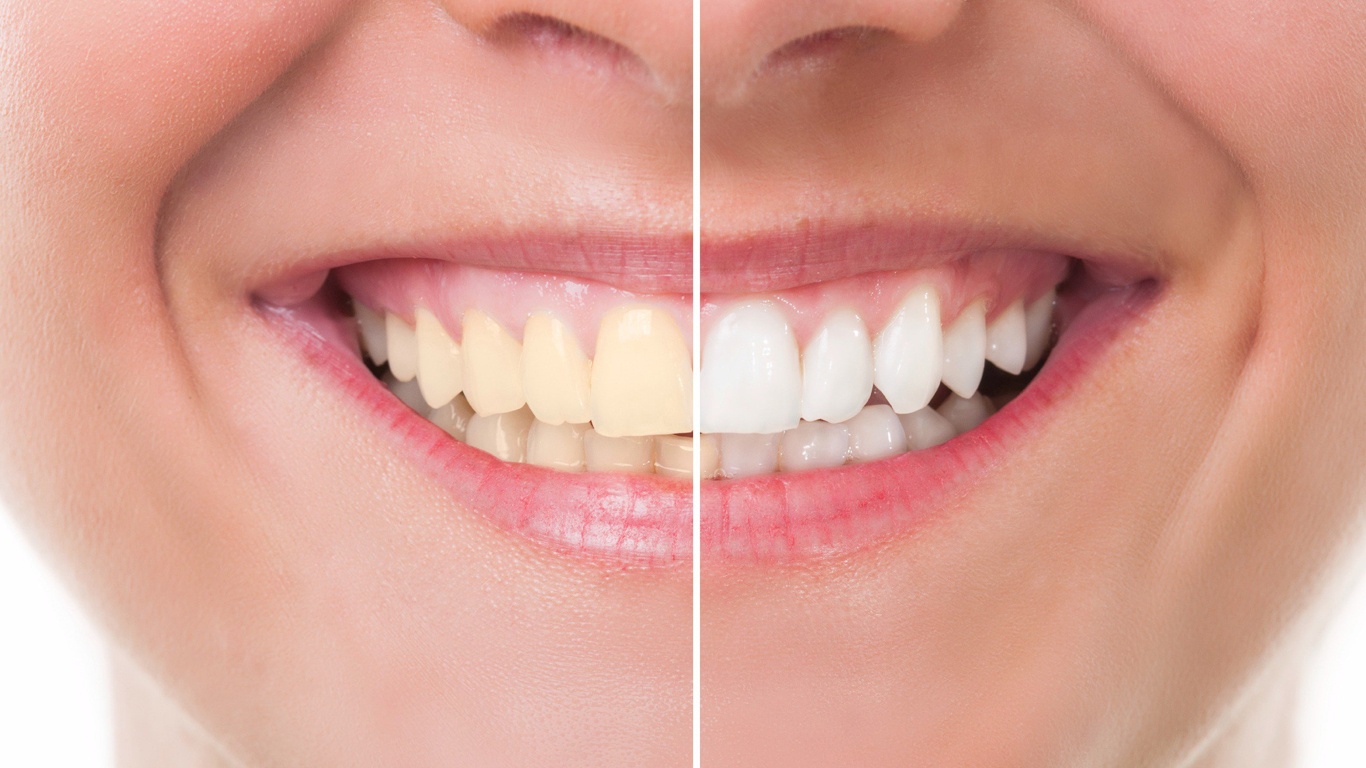Illuminating Smiles with
Radiance and Confidence
A bright and radiant smile can significantly impact one's appearance and self-confidence. Teeth whitening treatment has gained immense popularity as an effective cosmetic dental procedure that can restore the natural whiteness of teeth. This article delves into the world of teeth whitening, exploring different types of treatments, the procedure involved, and the remarkable benefits they offer in rejuvenating smiles.
Teeth whitening is a cosmetic dental procedure designed to lighten the color of teeth and remove stains and discoloration.

Causes
Food and Beverages: Certain foods and beverages can stain the teeth over time. Examples include coffee, tea, red wine, cola, berries, and deeply pigmented sauces like tomato sauce or soy sauce.
Tobacco Use: Smoking or using tobacco products can lead to yellowing and discoloration of teeth. The tar and nicotine present in tobacco can penetrate the enamel, causing stubborn stains.
Poor Oral Hygiene: Inadequate oral hygiene practices can contribute to teeth discoloration. Plaque buildup and tartar accumulation can cause the teeth to appear yellow or dull.
Aging: As we age, the outer layer of enamel on our teeth naturally wears away, revealing the dentin underneath. Dentin is naturally yellow in color, so as enamel thins with age, teeth may appear more yellow or discolored.
Trauma or Injury: Teeth may become discolored as a result of trauma or injury to the mouth. When the dentin inside the tooth is damaged, it can lead to discoloration.
Medications: Certain medications, such as tetracycline antibiotics (taken during childhood), antihistamines, and high blood pressure medications, can cause teeth discoloration, especially when taken for an extended period.
Dental Materials: Some dental materials, such as amalgam fillings (silver fillings), can cause a grayish appearance to the teeth surrounding them.
Genetics: Some individuals may be genetically predisposed to have naturally darker or more yellowish teeth.

Procedure
Assessment and Diagnosis:
The first step in periodontal therapy is a comprehensive assessment of your oral health. The dentist or periodontist will examine your gums, measure pocket depths (the space between the gums and teeth), and take X-rays to evaluate the extent of gum disease and bone loss. This evaluation helps determine the appropriate treatment plan for your specific needs.
Scaling and Root Planing:
The primary procedure involved in periodontal therapy is scaling and root planing. It is a deep cleaning process performed under local anesthesia. The dentist or dental hygienist will use special instruments to remove plaque, tartar, and bacterial toxins from the tooth surfaces and below the gumline. The root surfaces will also be smoothed (planed) to eliminate rough areas and promote gum tissue reattachment.
Periodontal Maintenance:
Following scaling and root planing, a periodontal maintenance program is implemented to ensure the long-term success of the treatment. This typically involves regular follow-up appointments every few months for professional cleanings and monitoring of gum health. The frequency of maintenance visits may vary based on the severity of the gum disease and individual patient needs.
Surgical Intervention (if necessary):
In some cases, advanced gum disease may require surgical intervention, such as gum grafting to cover exposed tooth roots or flap surgery to access and clean deeper pockets. These procedures are performed by a periodontist and are aimed at resolving more severe cases of periodontitis.

Restore-Rejuvenate-Rejoice
Welcome to DMAX Day Surgery Center, the best plastic and cosmetics Surgery center in Jumeirah 3, Dubai - UAE, your one-stop destination for a wide range of Aesthetic, Plastic Surgery, Dental, or any labs services.
Dmax Day Surgery Center
10:00 - 21:00
Dermamax Medical Center
10:00 - 22:00
